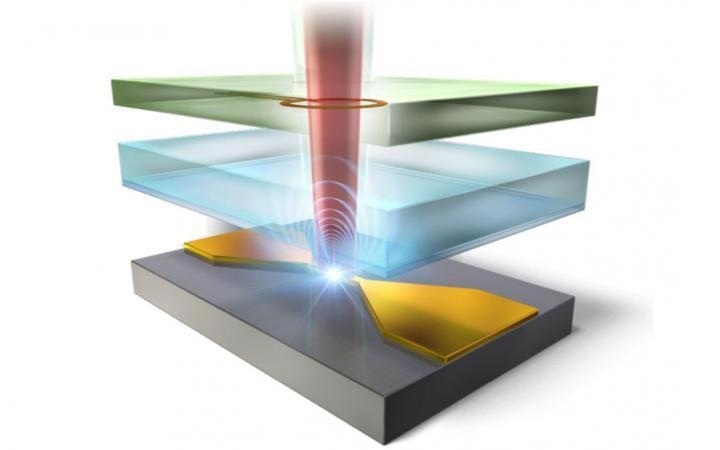At the University of Tsukuba’s Division of Physics, researchers have utilized the quantum effect known as “spin-locking” to considerably improve the resolution of radio-frequency imaging of nitrogen-vacancy defects present in a diamond.
 University of Tsukuba researchers achieved micrometer spatial resolution for radio-frequency imaging of nitrogen-vacancy centers in diamond by enhancing the signal with quantum spin-locking. This work may lead to more accurate material characterization, medical diagnostics, and quantum computers. Image Credit: University of Tsukuba.
University of Tsukuba researchers achieved micrometer spatial resolution for radio-frequency imaging of nitrogen-vacancy centers in diamond by enhancing the signal with quantum spin-locking. This work may lead to more accurate material characterization, medical diagnostics, and quantum computers. Image Credit: University of Tsukuba.
This research could pave the way for quicker and more precise material analysis, as well as practical quantum computers.
For a long-time, nitrogen-vacancy (NV) centers have been studied for their possible use in quantum computers. An NV center is a kind of defect found in a diamond’s lattice, where two adjacent carbon atoms have been substituted with a void and a nitrogen atom.
Due to this, an unpaired electron is left behind, which could be detected with the help of radio-frequency waves. The reason is its likelihood of discharging a photon relies on its spin state. But the spatial resolution of radio wave detection with traditional radio-frequency methods has remained not so perfect.
Currently, scientists at the University of Tsukuba have driven the resolution to its limit by using a method known as “spin-locking.” In this method, microwave pulses are employed to put the spin of an electron in a quantum superposition up and down at the same time.
A driving electromagnetic field then makes the direction of the spin to precess around, similar to a wobbling top. The outcome is an electron spin that is protected from random noise but powerfully coupled to the detection equipment.
Spin-locking ensures high accuracy and sensitivity of the electromagnetic field imaging. The spatial resolution we obtained with RF imaging was much better than with similar existing methods and it was limited only by the resolution of the optical microscope we used.
Shintaro Nomura, Study First Author and Professor, University of Tsukuba
The high density of NV centers in the used diamond samples enables the collective signal generated by them to be picked up easily using this technique. This enabled the sensing of collections of NV centers at the micrometer level.
The method illustrated in this study might be employed in a wide range of application areas. For instance, it can be used in the characterizations of proteins, polymers, and polar molecules, as well as the characterization of materials. Also, it may be utilized in medical applications, for example, as a new method to execute magnetocardiography.
This study was financially supported in part by a Grant-in-Aid for Scientific Research (Nos. JP18H04283, 291 JP18H01243, JP18K18726, and JP21H01009) from the Japan Society for the Promotion of 292 Science.
Journal Reference:
Nomura, S., et al. (2021) Near-field radio-frequency imaging by spin-locking with a nitrogen-vacancy spin sensor. Japanese Journal of Applied Physics. doi.org/10.1063/5.0052161.